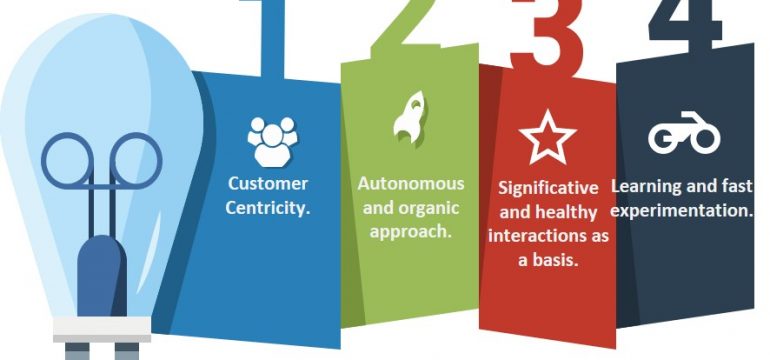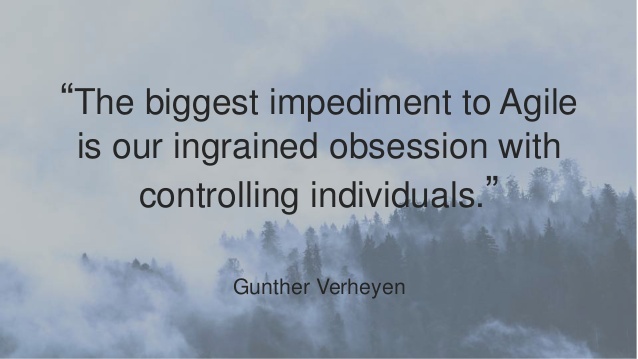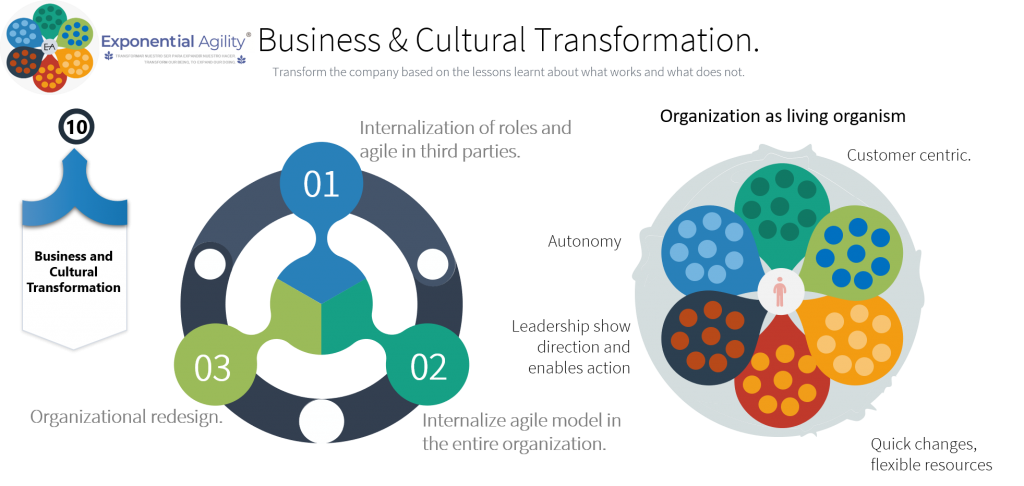Sistema ágil y adaptivo del progreso.
Cuando pensamos en estrategia ágil, recordemos que existen al menos seis “tracks”, pistas o dominios de los cuales hay que tener visibilidad para progresar, no necesariamente de forma lineal, estas son 1) formulación de la estrategia de la cual ya hemos hablado en nuestra capsula anterior, 2) sistema ágil y adaptivo del progreso, 3) alineación rápida y continua, 4) ejecución Ágil y Adaptiva, 5) inspección y adaptación a la estrategia y 6) alineación de la cultura y el liderazgo a la empresa. El día de hoy abordaremos el tema “sistema ágil y adaptivo del progreso”.

Al implementar la estrategia, las organizaciones deben “vigilar el rendimiento y el riesgo”, por ello es relevante contar un sistema efectivo que permita observar el progreso e incrementar la visión misma de este sistema a través de su adaptabilidad y sincronización en la ejecución.
Explotar las oportunidades y mitigar los riesgos significa generar las capacidades para cambiar de posición de forma rápida, capturando, interpretando y actuando basados en datos y puntos de vista, enfocándose en tiempo real tan rápido como sea posible, aunque la estrategia y la operación son cosas diferentes, aquí es donde requerimos alineación, a través de la transparencia y visibilidad antes de ejecutar, co-crear objetivos, indicadores, así como identificar iniciativas de impacto y su adecuado fondeo para su lanzamiento son elementos básicos para incrementar la probabilidad de éxito en la adaptabilidad efectiva de nuestra empresa al mercado, en beneficio de los clientes.
Muchas organizaciones están obsesionadas con la medición, la recomendación es invertir tiempo y dinero en desarrollar personas que trabajen con mediciones, en el desarrollo de la práctica y conceptos básicos de los dominios subyacentes como: ciencia de datos, analíticos, experiencia de cliente y de usuario etc., ello creará una fortaleza interna para apalancar de forma eficaz los resultados focalizados.
Debemos asegurarnos que cada iniciativa estratégica, este adecuadamente caracterizada, posea una fecha de inicio y finalización, es un esfuerzo único y repetible, es lo suficientemente importante como para requerir patrocinio de un miembro del equipo de liderazgo de alto nivel, si bien cuando estamos iniciando una transformación, la iniciativa estratégica es una iniciativa piloto, lo que debemos comprender es que no tienen nada de piloto, ya que el compromiso esta establecido al más alto nivel, a pesar de encontrarse estar declarada como una hipótesis de negocio, la expectativa es alta, ello requiere también de un alto grado de compromiso en su ejecución.
Es importante desarrollar declaraciones de objetivos, lo recomendable es escribir una declaración para cada objetivo dentro de las perspectivas financieras y del cliente, enfocándonos al resultado estratégico que buscamos, agreguemos un segundo párrafo de cómo se logrará el resultado deseado, así como los riesgos estratégicos para cada objetivo estratégico.

Es importante establecer de forma explícita las preferencias de cómo queremos llevar a cabo los objetivos, como impactaremos la cultura interna, por lo cual a través de una lluvia de ideas co-creamos los comportamientos tanto positivos, que podrían resultar de ello, para establecer como podemos retroalimentar los positivos y mitigar lo negativos, estos pueden estar en consonancia con los valores de la empresa.
Hay que estar seguros de tener los recursos financieros y el capital humano para iniciar, las iniciativas estratégicas debieran estar conectadas a los procesos internos, a las perspectivas de aprendizaje y crecimiento (a lo que se realiza en la empresa, que genera resultados financieros y para el cliente).
Hay que recordar que una iniciativa estratégica se encuentra determinada por el impacto positivo y la cobertura al cliente, lo cual será proporcional a las utilidades que se generen. De forma ideal, las iniciativas deberían impactar a más de un objetivo estratégico, es necesario cuidar que la empresa o corporativo no se centre en enlaces uno a uno con los objetivos estratégicos, los cuales demuestran centralidad en silos, incremento de dependencias declaradas, baja colaboración y rendimientos subóptimos, Russell Ackoff describía esto referido al impacto de la mejora en el trabajo: “es mejor la mejora de las interacciones que la mejora de un área por separado”, lo que quiere decir que el apalancamiento de los resultados se logra a través de la colaboración, donde una iniciativa puede impactar un conjunto de objetivos estratégicos.

Este dominio de la agilidad estratégica, está relacionado con el establecimiento de la visión y caracterización clara del portafolio y de sus iniciativas estratégicas, de la definición de métricas iniciales que representen el progreso en los resultados y del establecimiento de los eventos y mecanismos que permitan realizar la inspección y adaptación de los planes a nivel, financiero, operacional principalmente, con el objetivo de responder de manera efectiva a las prioridades cambiantes entre cada uno de los ciclos.
Muchas gracias por su lectura, en la siguiente entrega desarrollaremos el dominio “alineación rápida y continua de la estrategia”.
Miguel Ángel Martínez Hernández, 10 de marzo de 2021.
Referencias:
- Ismail, I., Palao, F., y Michelle, L. (2019). Transformación Exponencial. México D.F.: Bubok Publishing SL.
- Lyngso, S. (2014). Agile strategy management: Techniques for continuous alignment and improvement. Boca Raton: CRC Press.
- Fernando, R. (2019). Agile strategy: How to create a strategy ready for anything. Harlow, England: Pearson.
- Lambert, D. (2020). Practical Guide to Agile Strategy Execution: Design, Architect, Prioritize, and Deliver your Corporate Future Successfully. CA: Independently published.
- Wiraeus, D., y Creelman, J. (2019). Agile strategy management in the digital age: How dynamic balanced scorecards transform decision making, speed and effectiveness. Cham, Switzerland: Palgrave Macmillan.
- Porter, D. T., y Porter, M. E. (2015). Estrategia competitiva: Técnicas para el análisis de los sectores industriales y de la competencia. México D.F.: Grupo Editorial Patria.
















